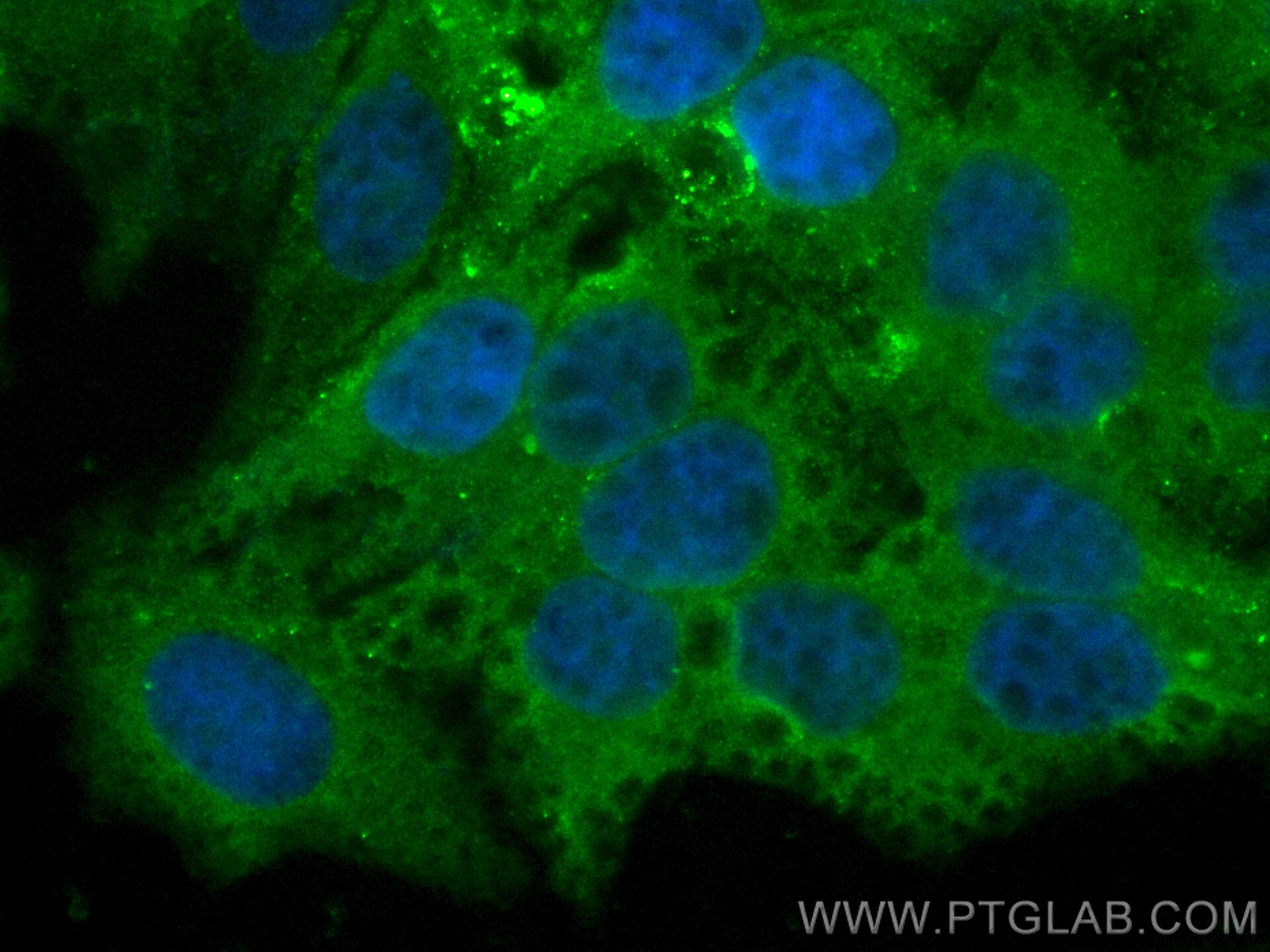Validation Data Gallery
Tested Applications
| Positive IF/ICC detected in | HepG2 cells |
Recommended dilution
| Application | Dilution |
|---|---|
| Immunofluorescence (IF)/ICC | IF/ICC : 1:50-1:500 |
| It is recommended that this reagent should be titrated in each testing system to obtain optimal results. | |
| Sample-dependent, Check data in validation data gallery. | |
Product Information
CL488-15087 targets SEC61B in IF/ICC applications and shows reactivity with human, mouse, rat samples.
| Tested Reactivity | human, mouse, rat |
| Host / Isotype | Rabbit / IgG |
| Class | Polyclonal |
| Type | Antibody |
| Immunogen | SEC61B fusion protein Ag7169 相同性解析による交差性が予測される生物種 |
| Full Name | Sec61 beta subunit |
| Calculated molecular weight | 10 kDa |
| Observed molecular weight | 10-15 kDa |
| GenBank accession number | BC001734 |
| Gene Symbol | SEC61B |
| Gene ID (NCBI) | 10952 |
| RRID | AB_3672621 |
| Conjugate | CoraLite® Plus 488 Fluorescent Dye |
| Excitation/Emission maxima wavelengths | 493 nm / 522 nm |
| Form | Liquid |
| Purification Method | Antigen affinity purification |
| UNIPROT ID | P60468 |
| Storage Buffer | PBS with 50% glycerol, 0.05% Proclin300, 0.5% BSA , pH 7.3 |
| Storage Conditions | Store at -20°C. Avoid exposure to light. Stable for one year after shipment. Aliquoting is unnecessary for -20oC storage. |
Background Information
The heteromeric SEC61 complex is composed of alpha, beta and gamma subunits. Oligomers of the SEC61 complex form a transmembrane channel where proteins are translocated across and integrated into the ER membrane (PMID: 10212142). SEC61B is the beta subunit of the SEC61 complex. It has been reported that SEC61B facilitates cotranslational protein transport and interacts with the signal peptidase during translocation (PMID: 9585408).
Protocols
| Product Specific Protocols | |
|---|---|
| IF protocol for CL Plus 488 SEC61B antibody CL488-15087 | Download protocol |
| Standard Protocols | |
|---|---|
| Click here to view our Standard Protocols |
